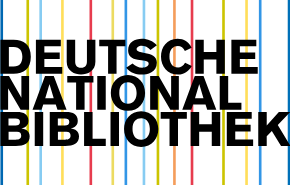Priority Queuing Reallocation: A Comparative Experimental Study of Mechanisms and Outcomes
Keywords:
Priority Queuing, Reallocation Mechanisms, Queue EfficiencyAbstract
This study, Priority Queuing Reallocation: A Comparative Experimental Study of Mechanisms and Outcomes, investigates the impact of various reallocation mechanisms on the efficiency and fairness of priority queuing systems. Priority queuing is a fundamental method for managing service sequences across diverse sectors, including healthcare, transportation, and customer service. While traditional priority queuing assigns service based on predefined priority levels, reallocation mechanisms allow for dynamic adjustments, enabling entities to "trade places" within the queue to optimize outcomes. This research employs controlled laboratory experiments to compare two distinct reallocation strategies: the server-initiated auction, where the server sells the right to be served next to the highest bidding customer, and the customer-initiated auction, where new arrivals can sequentially trade places with queued customers. The study evaluates these mechanisms based on criteria such as queue efficiency, service fairness, and participant satisfaction. Findings indicate that both reallocation mechanisms enhance queue efficiency compared to traditional methods. However, the server-initiated auction is perceived as fairer by participants, despite both mechanisms achieving similar efficiency gains. These insights offer valuable guidance for designing priority queuing systems that balance efficiency with fairness considerations.
References
Afèche, P., & Mendelson, H. (2004). Pricing and priority auctions in queueing systems with a generalized delay cost structure.ManagementScience,50(7), 869–882.
Arkes, H. R., & Blumer, C. (1985). The psychology of sunk cost.Organizational Behavior and Human Decision Processes,35(1), 124–140.Baliga, S., & Ely, J. C. (2011). Mnemonomics: The sunk cost fallacy as a memory kludge.American Economic Journal: Microeconomics,3(4),35–67.
Barzel, Y. (1974). A theory of rationing by waiting.The Journal of Law and Economics,17(1), 73–95.
Bendoly, E., Croson, R., Goncalves, P., & Schultz, K. (2010). Bodies of knowledge for research in behavioral operations.Production andOperations Management,19(4), 434–452.
Chatterjee, K., & Samuelson, W. (1983). Bargaining under incomplete information.Operations Research,31(5), 835–851.
Eliaz, K., Offerman, T., & Schotter, A. (2008). Creating competition out of thin air: An experimental study of right‐to‐choose auctions.Gamesand Economic Behavior,62(2), 383–416.
Feng, J. (2008). Optimal mechanism for selling a set of commonly ranked objects.Marketing Science,27(3), 501–512.
Friedman, D., Pommerenke, K., Lukose, R., Milam, G., & Huberman, B. A. (2007). Searching for the sunk cost fallacy.ExperimentalEconomics,10(1), 79–104.
Gershkov, A., & Schweinzer, P. (2010). When queueing is better than push and shove.International Journal of Game Theory,39(3), 409–430.
Glazer, A., & Hassin, R. (1986). Stable priority purchasing in queues.Operations Research Letters,4(6), 285–288.
Goeree, J. K., & Offerman, T. (2002). Efficiency in auctions with private and common values: An experimental study.American EconomicReview,92(3), 625–643.
Goeree, J. K., Plott, C. R., & Wooders, J. (2004). Bidders' choice auctions: Raising revenues through the right to choose.Journal of theEuropean Economic Association,2(2‐3), 504–515.
Hassin, R. (1995). Decentralized regulation of a queue.Management Science,41(1), 163–173.
Hassin, R., & Haviv, M. (2003).To queue or not to queue: Equilibrium behavior in queueing systems. Chicago, IL: Springer Science & BusinessMedia.
Helweg‐Larsen, M., & LoMonaco, B. L. (2008). Queuing among U2 fans: Reactions to social norm violations.Journal of Applied SocialPsychology,38(9), 2378–2393.
Heyman, J., Orhun, Y., & Ariely, D. (2004). Auction fever: The effect of opponents and quasi‐endowment on product valuations.Journal ofInteractive Marketing,18(4), 4–21.
Downloads
Published
Issue
Section
License
Copyright (c) 2024 Jeroen Abspoel

This work is licensed under a Creative Commons Attribution 4.0 International License.
Authors retain the copyright of their manuscripts, and all Open Access articles are disseminated under the terms of the Creative Commons Attribution License 4.0 (CC-BY), which licenses unrestricted use, distribution, and reproduction in any medium, provided that the original work is appropriately cited. The use of general descriptive names, trade names, trademarks, and so forth in this publication, even if not specifically identified, does not imply that these names are not protected by the relevant laws and regulations.






